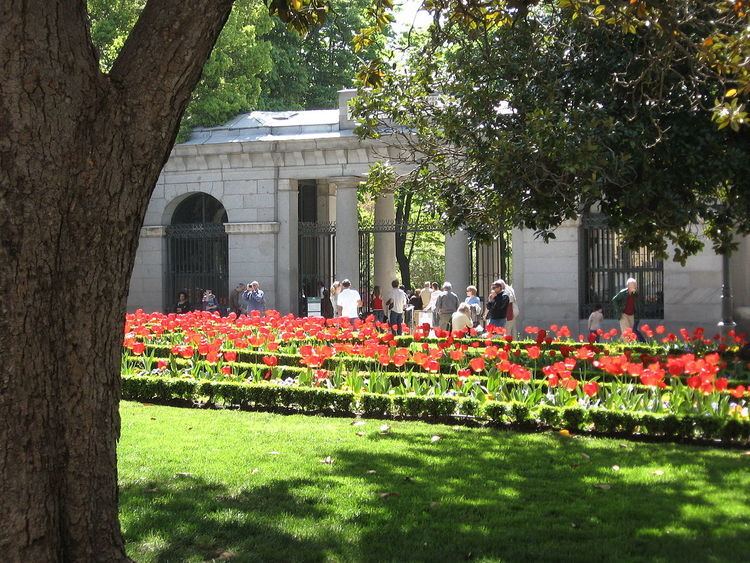Phone +34 914 20 30 17 | ||
 | ||
Hours Closed now Saturday10AM–6PMSunday10AM–6PMMonday10AM–6PMTuesday10AM–6PMWednesday10AM–6PMThursday10AM–6PMFriday10AM–6PMSuggest an edit Similar Buen Retiro Park, Museo Nacional Del Prado, Puerta de Alcalá, Royal Palace of Madrid, Temple of Debod Profiles | ||
Real jard n bot nico de madrid
Real Jardín Botánico de Madrid (Spanish for Royal Botanical Garden of Madrid) is an 8 hectares (19.7684 acres) botanical garden in Madrid (Spain). The public entrance is located at Plaza de Murillo, next to the Prado Museum.
Contents
- Real jard n bot nico de madrid
- Mi visita al real jard n bot nico de madrid
- History
- Todays garden
- Herbarium
- Scientific publications
- References
Mi visita al real jard n bot nico de madrid
History
The garden was founded on October 17, 1755, by King Ferdinand VI, and installed in the Orchard of Migas Calientes, near what today is called Puerta de Hierro, on the banks of the Manzanares River. It contained more than 2,000 plants collected by José Quer y Martínez, botanist and surgeon.
In 1774 King Charles III ordered the garden moved to its current location on the Paseo del Prado. This new site opened in 1781. Inside an area defined by wrought iron fencing, the design by architects Francesco Sabatini and Juan de Villanueva organized the garden into three tiered terraces, arranging plants according to the method of Linnaeus. Its mission was not only to exhibit plants, but also to teach botany, promote expeditions for the discovery of new plant species and classify them.
The garden was greatly augmented by a collection of 10,000 plants brought to Spain by Alessandro Malaspina in 1794. The Spanish War of Independence in 1808 caused the garden to be abandoned, but in 1857 director Mariano de la Paz Graëlls y de la Aguera revived it with a new greenhouse and refurbishment of the upper terrace. Under his leadership a zoo was created in the garden, but subsequently relocated to the Parque del Buen Retiro. Between 1880 and 1890 the garden suffered heavy losses, first losing 2 hectares (4.9 acres) to the Ministry of Agriculture in 1882, then losing 564 trees in 1886 to a cyclone.
Since 1939 the garden has been dependent on the Spanish National Research Council (CSIC) and in 1942 was declared Artistic Garden. In 1974, after decades of hardship and neglect, the garden was closed to the public for restoration work to its original plan. It reopened in 1981.
Today's garden
Today's garden is divided into seven major outdoor sections and five greenhouses. Total collections include about 90,000 plants and flowers, and 1,500 trees.
The garden's two greenhouses are divided into four rooms. The Graëlls greenhouse dates from the nineteenth century and exhibits tropical plants and bryophytes. The newer structure supports three climates: tropical, temperate, and desert.
Herbarium
The herbarium is the largest in Spain and now contains over a million specimens from around the world. The oldest material consists of plants collected during scientific expeditions undertaken in the 18th and 19th centuries.
As at 2016 the online herbarium's databases currently contain detailed information about all the specimens in the algae, bryophyte, lichen and fungi collections.
